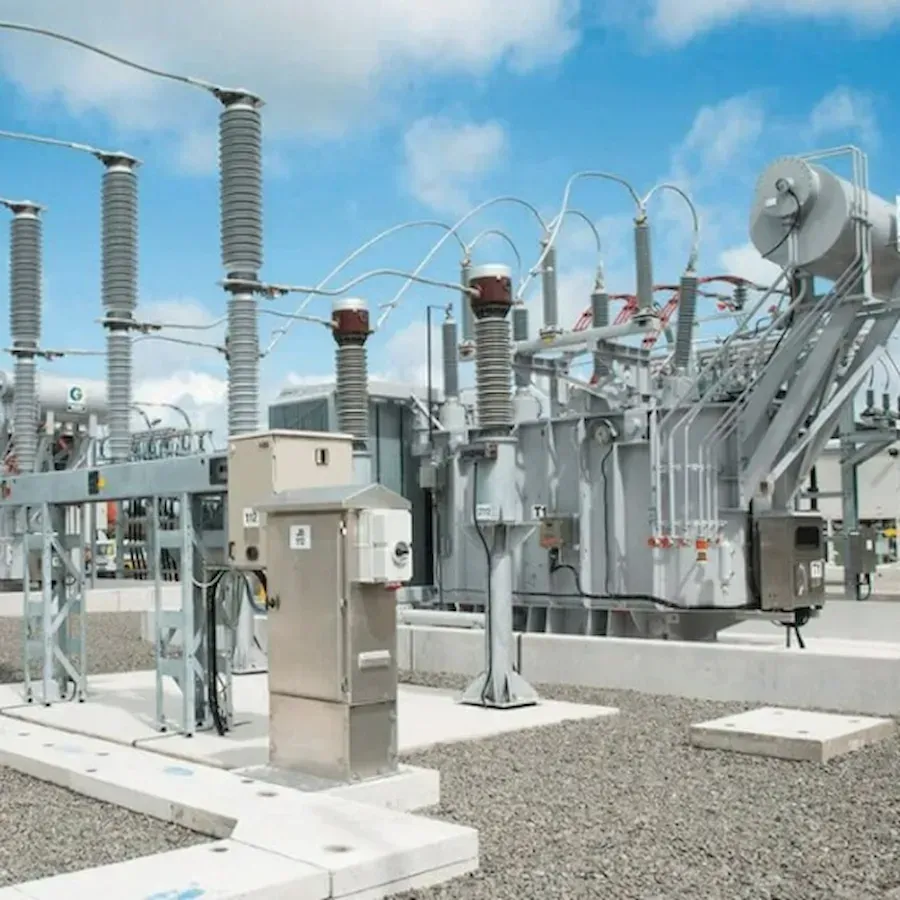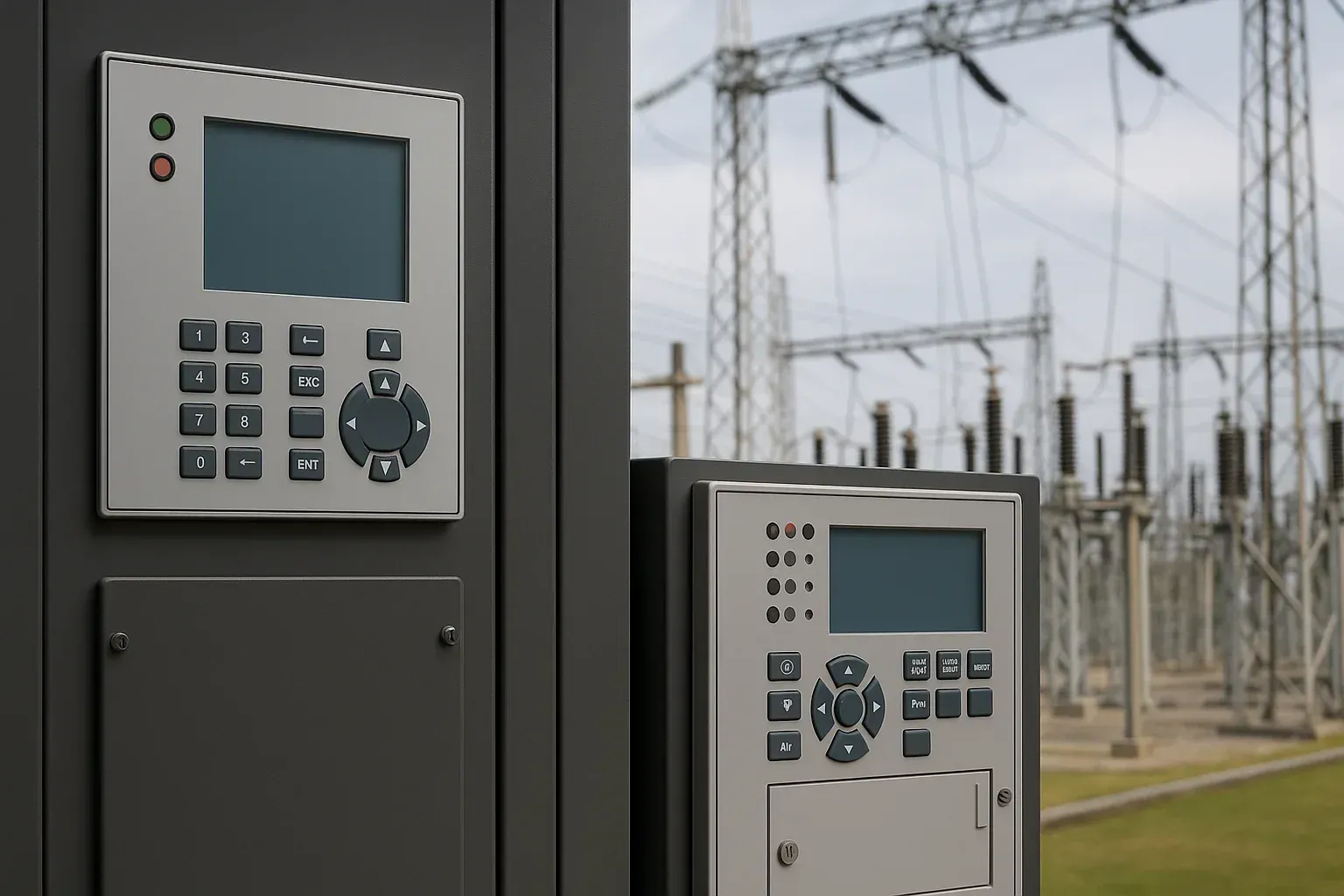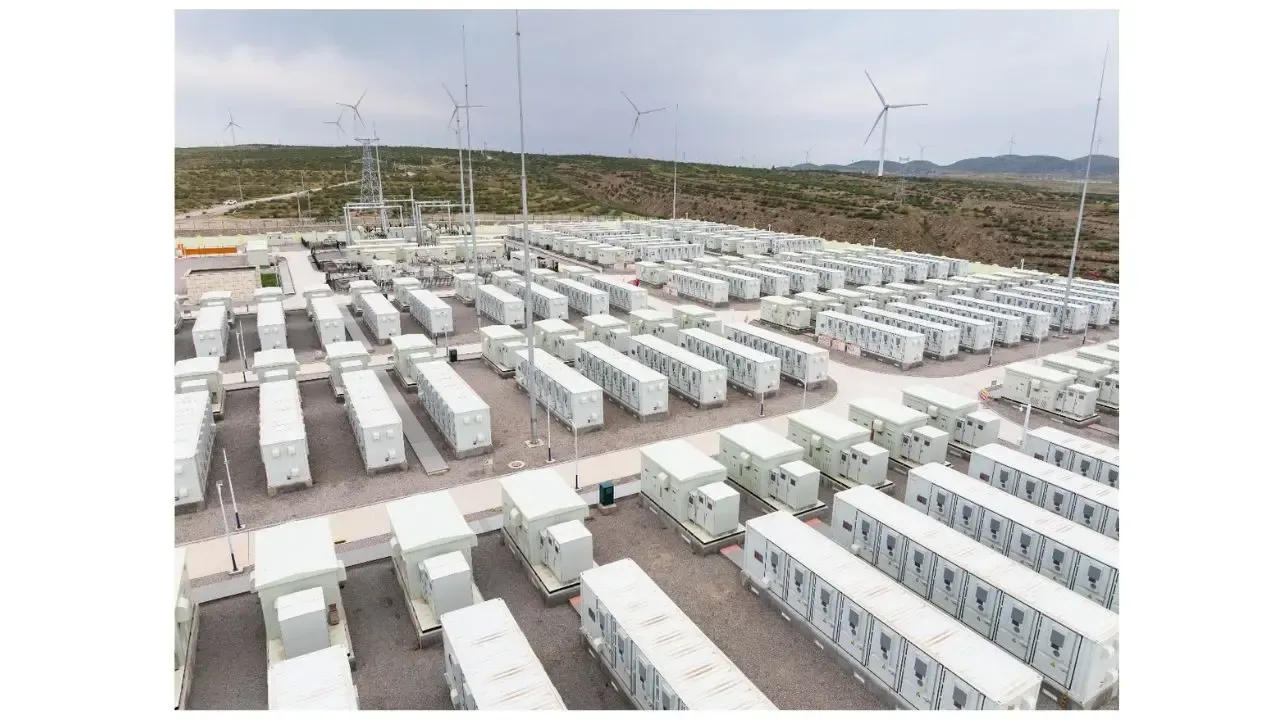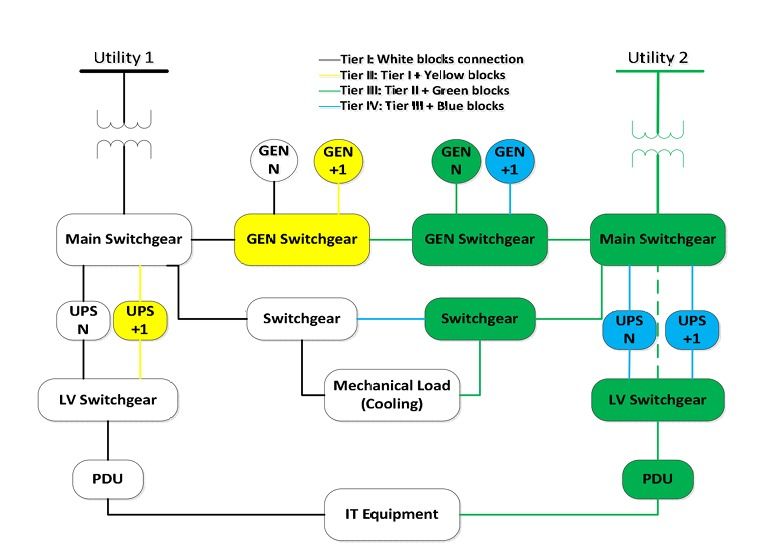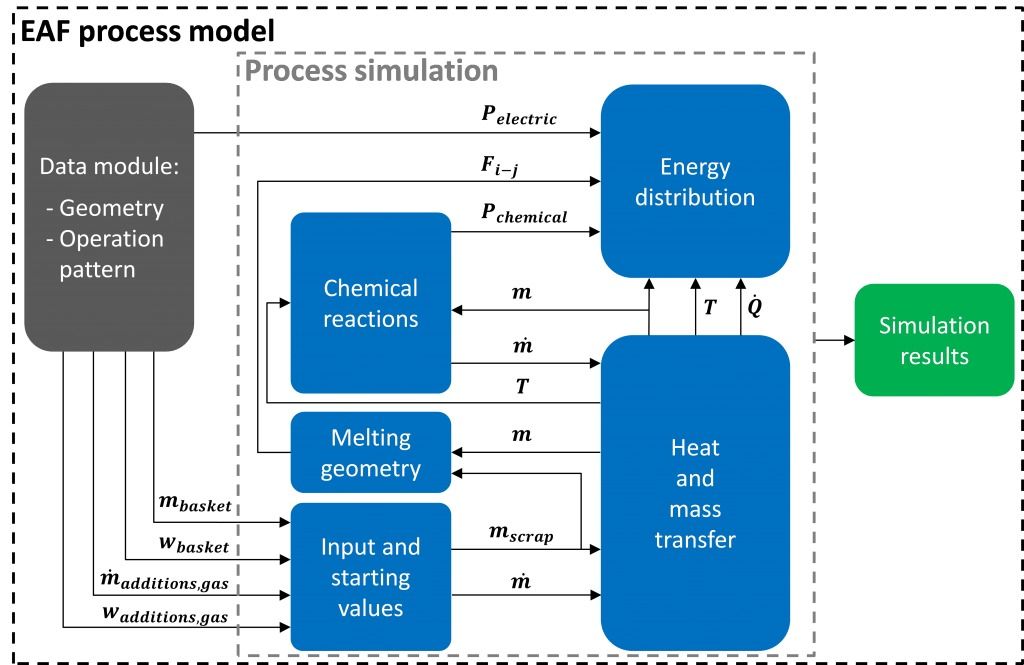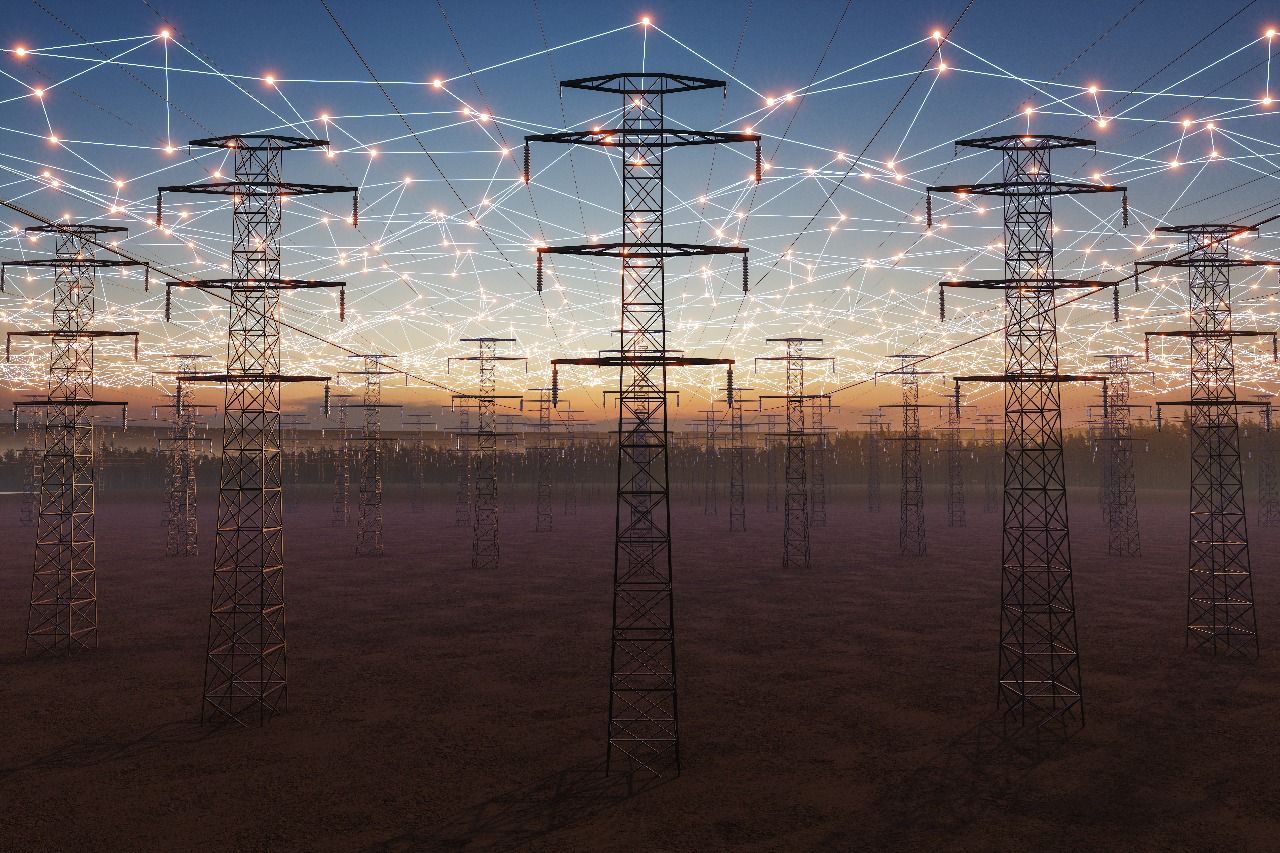POI Interconnection Engineering Support
Our skilled and knowledgeable engineering team has a rich history in designing, developing, and commissioning various substation and POI interconnection engineering support projects. These include interconnection design packages, regulatory studies, power system modeling, and full lifecycle technical documentation across multiple markets.
We support project developers, IPPs, utilities, and renewable energy firms through all stages of interconnect engineering, ensuring their facilities meet the grid requirements for safety, compatibility, and regulatory compliance.
What is Interconnection Point (POI)?
A Point of Interconnection (POI) is where a power project connects to the electric grid it’s the location that determines how your facility transfers power to utility lines. This point must be carefully selected and engineered to meet grid rules and ensure reliable service delivery.

Why Choose Us
At Keentel Engineering, we take pride in being the go-to engineering firm for power and utility system planning, design, control, and analysis. Some of the many attributes of our company that set us apart are:
Client-Focused Work Approach
Our team works cohesively on every project and with every client. We first develop a solid understanding of your project goals, requirements, and needs. From concept to commissioning, we assist you in every step, including interconnection application support, system modeling, and queue strategy.
30 Years of Experience
We have over three decades of experience in interconnect engineering, from basic POI siting to advanced system impact studies and compliance documentation. Rest assured, we have the knowledge, understanding, and expertise to handle and execute all types of projects with precision and regulatory alignment.
We’ve supported renewable and conventional generation projects with point of interconnection engineering across markets like PJM, ERCOT, MISO, and CAISO.
Quality with Innovation
Our strong reputation is built on detailed engineering, modern design tools, and strict quality control. Whether you're working on battery storage, utility-scale solar, or hybrid systems, we ensure your interconnection design and engineering meets both utility and ISO standards.
Attention-to-Detail
We manage every engineering detail — from thermal ratings and short circuit models to queue filings and curtailment risks — to help your project succeed.
Let's Discuss How to Optimize Your Next Project
Submit
We will get back to you as soon as possible.
Please try again later.
Download Our POI Interconnection Engineering Support Flyer
Please click the Download button to get our POI Interconnection Engineering Support flyer.
Comprehensive Interconnection Application Support
Our comprehensive interconnection application support service streamlines the process of submitting interconnection applications and assembling the necessary documentation for projects across multiple Regional Transmission Organizations (RTOs) and vertically integrated utilities.
RTOs like PJM, CAISO, NYISO, and MISO manage the power grid regionally and control the queue of new generation projects. Each has specific documentation, modeling, and application timelines — all of which we navigate for you.
We understand the complexities of these regulatory landscapes and are committed to making the process smooth, accurate, and timely.
Key Features
POI Interconnection Engineering Support
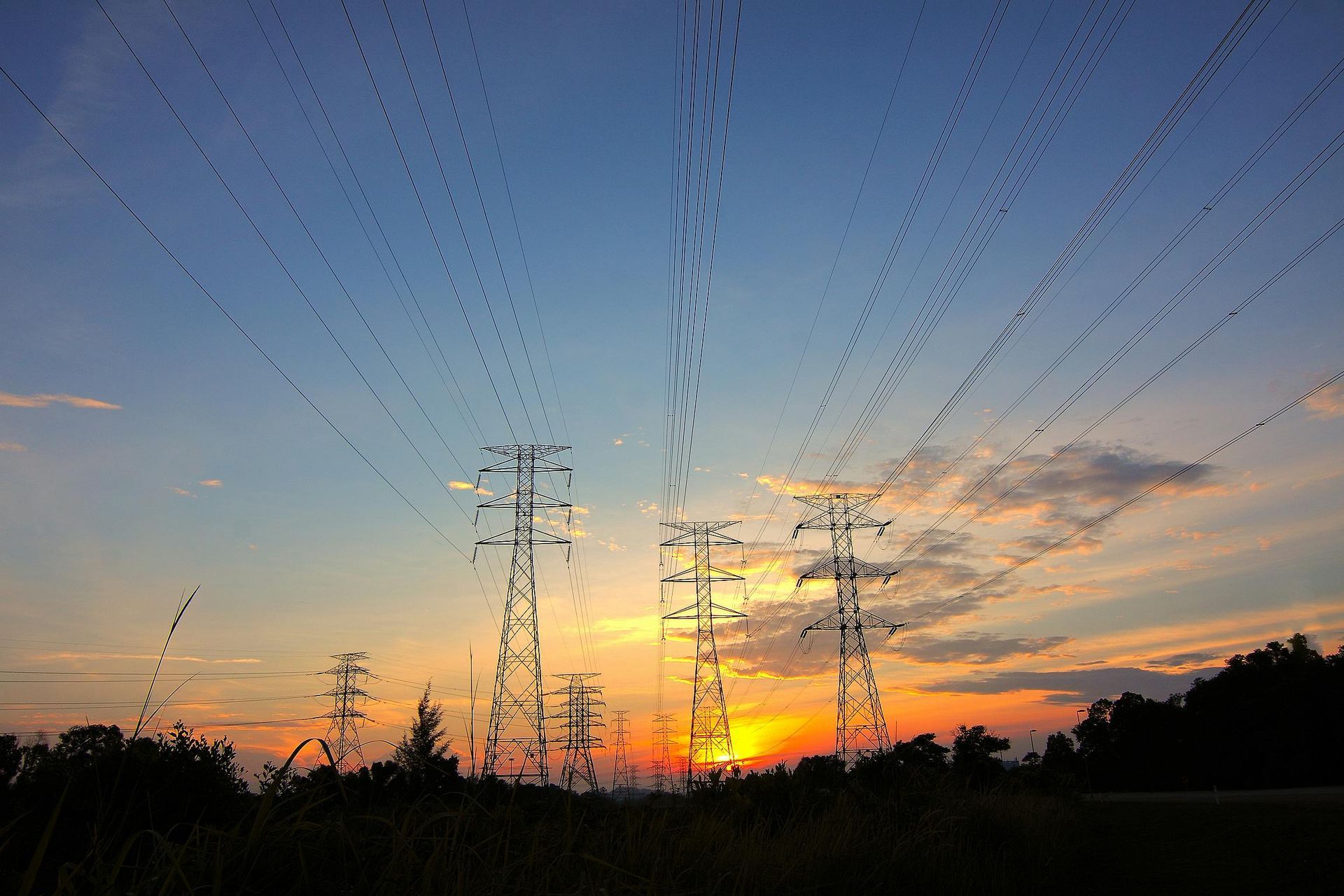
Our skilled and knowledgeable engineering team has a rich history in designing, developing and commissioning various substation and interconnection engineering support projects.

Multi-RTO Expertise
We serve a broad range of markets including PJM, CAISO, NYISO, MISO, ERCOT, SPP, WECC, SERC, and others. Each region has unique interconnection study requirements and tariffs. Our engineers are trained to comply with regional models, timing constraints, and jurisdiction-specific rules.

Documentation Preparation
We assemble all necessary application materials — from feasibility studies and system impact studies (SIS) to model validation, site layouts, and modeling files. A feasibility study evaluates if the grid can handle your project, and a system impact study checks if your project causes voltage or reliability issues.

Liaison with Departments
We work closely with both your internal teams (engineering, finance, legal) and external stakeholders (ISOs, utilities, consultants) to streamline application timelines and prevent delays.
POI Interconnection Engineering Support

Our skilled and knowledgeable engineering team has a rich history in designing, developing and commissioning various substation and interconnection engineering support projects.

Regulatory Compliance
We stay up to date on ISO-specific modeling requirements, POI reputation analysis, and queue reform policies. Whether it's complying with PJM Manual 14G or adhering to new FERC regulations, we ensure your submittals are technically sound and policy-aligned.

Timely Submissions
Interconnection deadlines can impact your project timeline and queue priority. We ensure applications are filed on time, with complete and accurate data, reducing the risk of rejections.
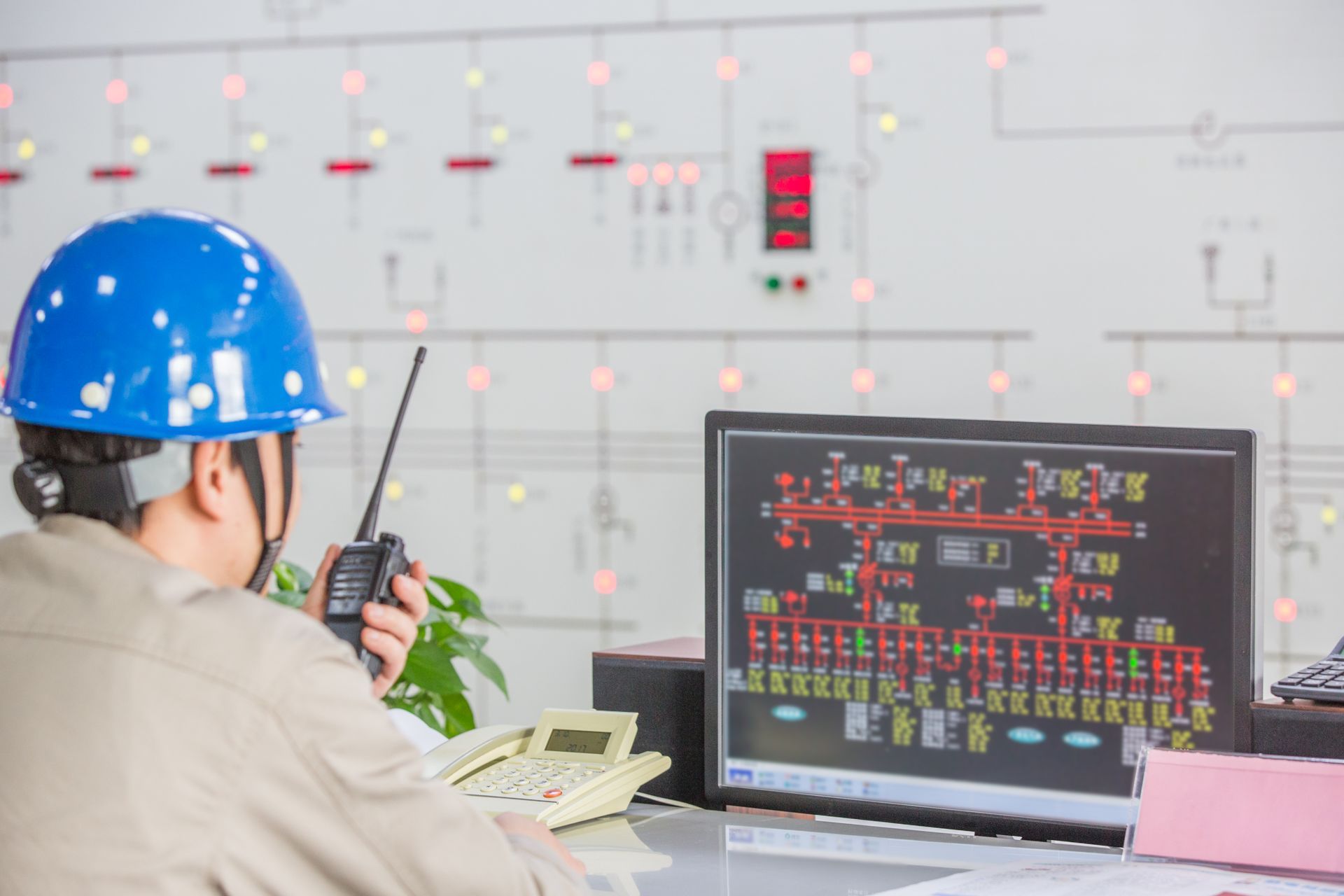
Customized Solutions
No two projects are the same. We tailor each application strategy to your project's size, fuel type, market, and POI. Whether you're pursuing renewable energy interconnection engineering or combined-cycle facilities, we deliver the right level of support.

Why Choose Us
With Keentel’s application support, you avoid common pitfalls, stay compliant with market rules, and accelerate project approvals. We specialize in managing interconnection design and engineering at the technical, administrative, and regulatory levels.

Renewable Project Interconnection Viability Assessment
We conduct detailed power flow studies using GE PSLF and Siemens PSS®E to assess how your proposed project will perform when connected to the grid. These simulations help evaluate system capacity, constraints, and grid stability issues. A power flow study shows how electricity will move through the network from your generator to end-users. It helps determine if your POI has enough Available Transfer Capability (ATC) — the amount of additional power a grid segment can handle.
Key Features
Power Flow Expertise
Using GE PSLF and Siemens PSS®E, we simulate how power moves from generator to grid. The models test voltage, thermal loading, and fault duty, showing if the point of interconnect can accept new energy without upgrades.
Interconnection Viability Assessment
We compare modeled results against ISO criteria and highlight congestion risks, grounding requirements, and protection settings—key factors in renewable energy interconnection engineering success.
Support for Due Diligence Studies
Investors require bankable numbers. We convert megawatt losses, curtailment hours, and upgrade costs into clear payback metrics so finance teams can sign off with confidence.
Optimal Interconnection Locations
By blending ATC (available transfer capability) data, LMP (locational marginal pricing) trends, and land-use filters, we rank candidate POIs and recommend sites with lower upgrade cost and stronger revenue potential.
Customized Solutions
Offshore wind, standalone storage, and peaker replacements each stress the grid differently. We adjust study boundaries, load-flow seasons, and contingency sets so your results match the real-world operating profile.
How the POI Siting Process Works
Choosing the right Point of Interconnection (POI) is one of the most important decisions in any energy development project. At Keentel Engineering, we help you evaluate, compare, and secure the optimal POI using a blend of technical, regulatory, and economic factors.
The process includes:
Site Selection and Grid Study Mapping
We begin by reviewing nearby substations, voltage levels, and available transmission lines to shortlist feasible POIs based on your project location and MW size.
Available Transfer Capability (ATC) Analysis
We assess how much capacity is available at each POI to handle your project's output. A POI with low ATC may trigger costly upgrades or curtailments.
Queue Screening and Congestion Review
Our team evaluates the existing interconnection queue at each POI and identifies potential risks like long wait times or overloaded substations.
Technical Compatibility Checks
We analyze voltage levels, short circuit contributions, and grid topology to confirm that the POI meets both ISO and utility requirements.
Final POI Selection Support
Once a preferred POI is identified, we assist in preparing submission-ready documentation for study approval with RTOs or vertically integrated utilities.
This structured process ensures you select a POI that balances technical feasibility, cost efficiency, and project timeline — while avoiding costly mistakes or application rejections.
Why Choose Us
Technical Excellence
Our team comprises experts with deep technical knowledge in power systems and grid integration, ensuring the accuracy and reliability of our assessments.
Data-Driven Insights
We base our recommendations on robust data analysis, enabling you to make informed decisions that enhance the success of your renewable projects.
Market Insight
We stay updated on the evolving regulatory and market conditions in your target markets, helping you navigate the interconnection process effectively.
Collaborative Partnership
We view ourselves as an extension of your team, working hand-in-hand to support your project’s success from conception to execution.
Curtailment Study Review and Project Finance Support
When a curtailment study shows that your project may have to reduce output due to grid constraints, we translate that technical result into financial impact. Curtailment refers to instances where your project is forced to generate less than full output due to limited grid capacity or congestion.
Key Service Features
Curtailment Study Review
We audit study inputs, identify overly conservative assumptions, and quantify true curtailment risk—information that can cut reserve margins and unlock hidden value.
Management-Level Summaries
Technical results are rewritten in plain language for executives: percentage-of-time curtailed, annual revenue impact, and sensitivity to transmission upgrades.
Project Finance Collaboration
Working inside your cash-flow model, we add curtailment scenarios, merchant price curves, and debt-service triggers, aligning engineering reality with lender requirements.
Consultant Coordination
If specialist relay, protection, or market analysts are required, Keentel orchestrates scope, timelines, and data exchange so external insights feed directly into your base model.
Data-Driven Decision Support
Our integrated reports merge keentel engineering compliance and modeling support findings with your financial KPIs, delivering one authoritative source for board or investor review.
Why Choose Us
Expertise
Our team consists of experts in both technical and financial aspects of energy projects. We bridge the gap between technical data and financial decision-making.
Customized Solutions
We understand that each project has unique requirements. Our approach is flexible and tailored to meet your specific needs and objectives.
Efficiency
We focus on delivering results efficiently and within agreed-upon timelines, ensuring that your project timelines remain on track.
Cost-Effective
Our services are designed to maximize the financial benefits of your projects by identifying opportunities for optimization and risk mitigation.
Transmission & Interconnection Tariff Evaluation and Strategy
We assess tariff costs, queue timelines, and study triggers that can impact your project's economics and schedule.
An interconnection tariff includes costs for studies, upgrades, reactive support, and more. Each ISO has its own fee structure and deposit rules.
Key Service Features
POI Interconnection Engineering Support

Our skilled and knowledgeable engineering team has a rich history in designing, developing and commissioning various substation and interconnection engineering support projects.

Market Expertise
We decode tariff language from PJM, CAISO, NYISO, ERCOT, and MISO into clear cost lines—application fees, study deposits, network upgrades—so you know the full price of grid entry.

Tariff Evaluation
Each tariff clause is mapped to project scope, highlighting pass-through versus negotiable costs, and flagging credits you can reclaim after energization.

Cost Assessment
We create a life-cycle capex and opex profile around interconnect engineering charges, giving you an apples-to-apples view across multiple POIs.
POI Interconnection Engineering Support

Our skilled and knowledgeable engineering team has a rich history in designing, developing and commissioning various substation and interconnection engineering support projects.

Timeline Analysis
By tracking average study durations and current queue backlog, we forecast realistic in-service dates, allowing you to plan procurement and power-sale contracts with confidence.

Queue Strategy
Our analysts model entry, deferral, and withdrawal tactics—crucial in markets moving to cluster studies—so your POI reputation analysis remains strong and priority is maintained.

Customized Solutions
From small community solar to multi-state transmission tie-ins, we adjust tariff strategy to fit risk tolerance, funding stage, and schedule needs, ensuring the solution is right-sized and future-proof.
Download Our POI Interconnection Engineering Support Flyer
Please click the Download button to get our POI Interconnection Engineering Support flyer.
Why Choose Us
Strategic Insights
Our team provides you with a roadmap to success, leveraging our market knowledge to develop effective strategies that minimize costs and maximize efficiency.
Risk Mitigation
We identify potential risks and challenges associated with transmission and interconnection, offering proactive solutions to mitigate these risks.
Cost Savings
Our cost assessments and optimization strategies are designed to help you save on transmission and interconnection expenses, enhancing your project’s financial viability.
Timely Support
We prioritize delivering results within agreed-upon timelines, ensuring that your project stays on track.
POI Engineering Terms Explained for Project Owners
We know energy development is technical — here’s what some of these terms mean in plain language:
POI (Point of Interconnection)
The physical point where your facility connects to the grid.
PCC (Point of Common Coupling)
A shared grid connection used by multiple users, typically in smaller-scale projects.
ATC (Available Transfer Capability)
The spare capacity the grid has to accept new power at a location.
LMP (Locational Marginal Pricing)
The price of electricity at a specific location based on demand, supply, and congestion.
Curtailment
A temporary reduction in how much power your project is allowed to send to the grid.
System Impact Study
A detailed test to see how your project will affect voltage, reliability, and power quality once connected.
FAQ for POI Interconnection Engineering Support
1. What is a Point of Interconnection (POI)?
The Point of Interconnection (POI) is the location where a renewable energy project or power generation facility connects to the existing electrical grid. It is the physical or electrical point where the generated power is transferred from the plant to the transmission or distribution network. The POI is crucial for ensuring that the generated electricity is integrated seamlessly into the grid.
2. What are POI Interconnection Engineering Support Services?
POI Interconnection Engineering Support Services involve the technical assistance required for the successful design, planning, analysis, and execution of the interconnection process between a power generation system and the electrical grid. These services ensure that the interconnection complies with grid codes, standards, and regulatory requirements while optimizing safety, efficiency, and reliability.
3. Why are POI Interconnection Services important?
The interconnection process is a critical step in ensuring that power generated by renewable energy systems can be safely and efficiently delivered to the grid. These services help identify potential challenges in grid capacity, voltage stability, and protection schemes, while ensuring that the system meets local, regional, and national grid codes and standards.
4. What specific services are included in POI Interconnection Engineering Support?
Our POI Interconnection Engineering Support includes:
- Feasibility Studies: Analyzing the technical feasibility of connecting your power plant to the grid at the proposed POI.
- Grid Impact Studies: Evaluating how the interconnection will affect the existing grid in terms of voltage, stability, and reliability.
- Transmission System Studies: Assessing the capability of the transmission
- network to accommodate additional power generation from the plant.
- Power Flow Analysis: Ensuring that the power flow from the plant to the grid remains balanced and stable.
- Short Circuit Analysis: Determining fault levels at the POI and ensuring the proper sizing of protective equipment.
- Protection Coordination: Designing protection schemes to prevent system damage and minimize the impact of faults.
- Regulatory Compliance: Ensuring that the interconnection adheres to grid codes, local regulations, and industry standards.
- Interconnection Agreement Support: Assisting with the negotiation and preparation of interconnection agreements with utility companies or transmission system operators.
- System Upgrade Recommendations: Identifying any necessary upgrades to the grid or plant equipment to ensure a safe and reliable interconnection.
5. How do you determine the best Point of Interconnection for my project?
The selection of a POI depends on various factors, including the location of existing transmission lines, grid capacity, distance from the plant, and regulatory requirements. We assess these factors through feasibility studies and grid impact analyses to determine the most optimal POI that minimizes cost, risk, and technical challenges.
6. What is involved in a Grid Impact Study?
A Grid Impact Study analyzes how connecting a power generation system to the grid at the proposed POI will affect the performance of the transmission or distribution system. It includes evaluating power flow, voltage stability, fault conditions, and overall grid reliability. The study helps identify potential upgrades or modifications needed to accommodate the new generation capacity.
7. What regulatory requirements must be considered during the POI interconnection process?
The interconnection process must adhere to grid codes and regulations set by local transmission system operators (TSOs), utility companies, and government bodies. These regulations may address issues such as voltage control, frequency stability, protection coordination, safety standards, and environmental considerations. Our team ensures that all interconnection procedures comply with these requirements, ensuring the project’s smooth approval and integration.
8. How do you ensure that the interconnection design is safe and reliable?
We follow a rigorous process that includes:
- Detailed design reviews and simulations to ensure the interconnection is robust and fault-tolerant.
- Comprehensive protection system design that includes proper settings for relays, circuit breakers, and other protective devices.
- Short-circuit analysis to verify that protective devices will respond correctly during fault conditions.
- Continuous collaboration with grid operators to ensure compliance with operational standards and that the system remains stable and secure after interconnection.
9. What is a typical timeline for completing the POI interconnection engineering process?
The timeline for POI interconnection engineering depends on the complexity of the project and the requirements of the grid operator. Typically, the feasibility study, grid impact analysis, and other studies can take several weeks to a few months. Additional time may be required for addressing any upgrades or modifications to the grid or plant systems. We work closely with all stakeholders to ensure timely delivery and efficient project execution.
10. What are the potential challenges in the POI interconnection process?
Common challenges in the POI interconnection process include:
- Grid capacity limitations: The grid may need upgrades to accommodate additional generation capacity.
- Regulatory hurdles: Complying with complex regulatory requirements can delay the process.
- Protection and safety concerns: Ensuring that the interconnection does not cause safety issues or grid instability.
- Cost considerations: The need for infrastructure upgrades, transmission line expansions, or additional protective equipment can increase project costs. Our team helps mitigate these challenges by conducting thorough studies, coordinating with utilities, and providing tailored solutions to overcome obstacles.
11. How can you help with the interconnection agreement process?
We assist in the preparation and negotiation of interconnection agreements with utility companies and transmission system operators. These agreements outline the terms, conditions, and responsibilities of both parties, including the technical requirements, financial arrangements, and timelines for the interconnection. We ensure that these agreements protect your interests and comply with industry standards.
12. How do you manage costs during the POI interconnection process?
We help manage costs by conducting detailed feasibility studies and grid impact analyses early in the process, allowing us to identify potential issues and recommend cost-effective solutions. Our team works closely with contractors, utilities, and regulatory bodies to streamline the process, avoid unnecessary expenses, and minimize delays.
13. Do you provide support after the interconnection is completed?
Yes, we offer post-interconnection support to ensure that the integration of the power plant into the grid is smooth and operational. This can include:
- Performance monitoring and troubleshooting.
- Addressing any operational issues that arise.
- Supporting with any ongoing regulatory or compliance requirements.
14. How much do your POI Interconnection Engineering Support Services cost?
The cost of our POI interconnection services varies depending on the complexity and scale of the project. We provide customized pricing based on the scope of the work, the type of studies required, and the level of support needed. We offer competitive rates and ensure that you receive high-value engineering expertise tailored to your project.
15. What is the difference between Point of Interconnection (POI) and Point of Common Coupling (PCC)?
While both POI and PCC refer to physical connection points, they apply in different contexts. The Point of Interconnection (POI) is where your specific generation facility connects to the utility grid. The Point of Common Coupling (PCC) is a shared connection point used by multiple customers. POI is typically used in utility-scale projects, while PCC is more common in distributed generation or commercial setups under IEEE 1547.
16. What are the different types of interconnections in power systems?
Interconnections in power systems can be categorized as physical (e.g., transmission line tie-ins), network-based (between different grid zones), or system-level (between balancing authorities). In renewable energy, the most common interconnection is physical — connecting your solar, wind, or battery project to a specific POI on the transmission or distribution grid.
17. What is the difference between the Point of Delivery (POD) and the Point of Interconnection (POI)?
The Point of Interconnection (POI) is where the project connects to the utility grid. The Point of Delivery (POD) is where the power is officially handed off to the purchaser or utility for billing and metering purposes. In many projects, the POI and POD are the same, but in some cases they can be separate depending on the utility's metering infrastructure.
18.Can you give a simple example of interconnection in the energy industry?
Sure. Imagine a solar farm in Texas that generates power and feeds it into the ERCOT grid. The interconnection point — or POI — might be a nearby 138kV substation owned by the utility. After conducting studies and submitting an interconnection application, the project gets approval to connect at that location. From there, the solar farm delivers power directly to the grid.
Blog and Updates


